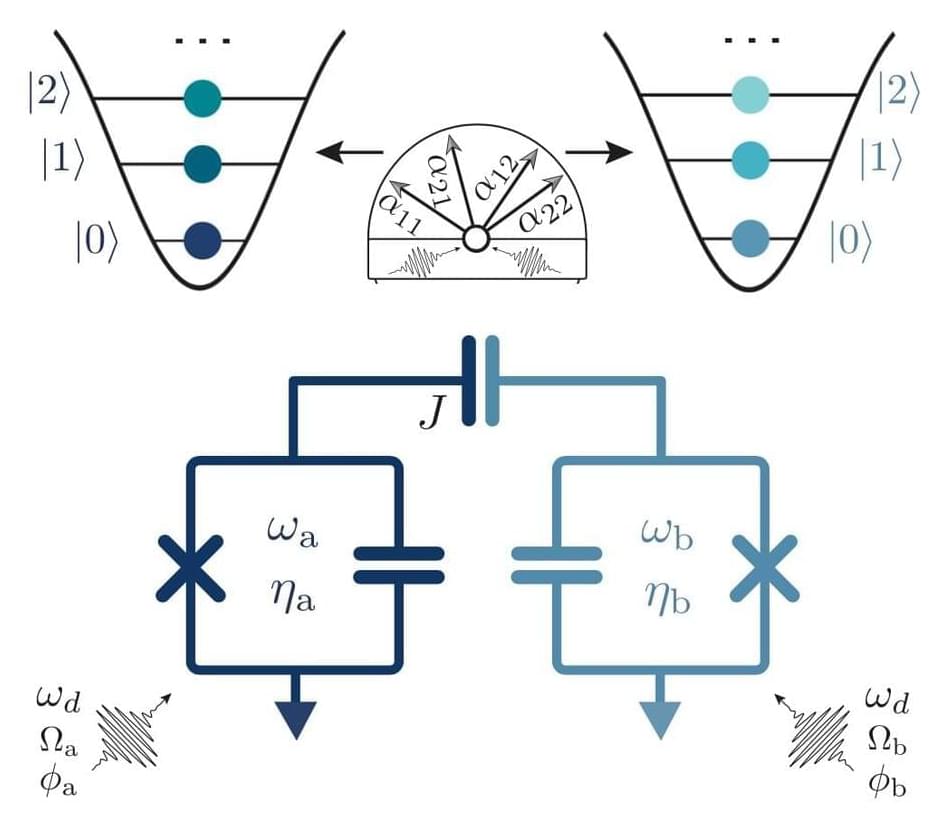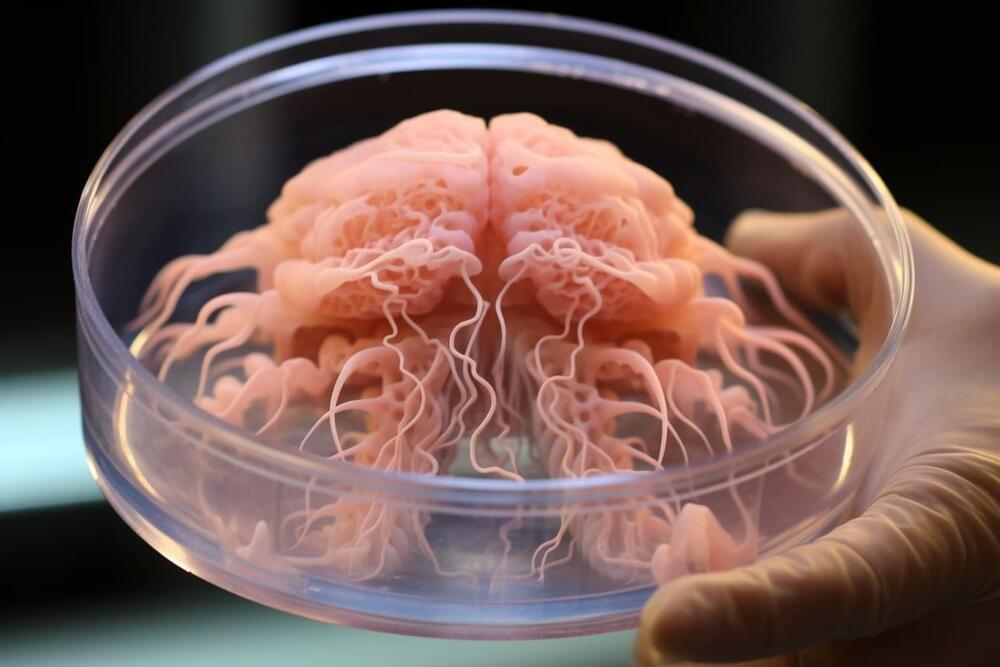New military and commercial craft aim to go far higher than jumbo jets and stay there for months, offering a more flexible alternative to satellites.



While Tesla famously won’t support CarPlay, code found in its iOS app update points to at least testing of AirPlay in its cars.
It’s never been possible to use Apple’s CarPlay in Teslas — not without a hack, and a convoluted one at that — but CEO Elon Musk has previously hinted at AirPlay support.
Now according to the unofficial “Tesla App Updates (iOS)” account on Twitter, the latest version of Tesla’s iPhone app includes a mention of AirPlay in its code.



An interdisciplinary team at the Advanced Quantum Testbed (AQT) at Lawrence Berkeley National Laboratory (Berkeley Lab) and the University of California, Berkeley’s Quantum Nanoelectronics Laboratory (QNL) achieved a technical breakthrough using qutrits—three-level systems—on a superconducting quantum processor.
The team successfully entangled two transmon qutrits with gate fidelities significantly higher than in previously reported works, thus getting closer to enabling ternary logic that can encode more information than their binary counterparts—qubits.
Published in Nature Communications in December 2022 and featured as an editor’s highlight, this experimental success pushes forward AQT’s qutrit research and development, including previous experimental successes published in 2021 in Physical Review X and Physical Review Letters. Ternary quantum information processors offer significant potential advantages in quantum simulation and error correction, as well as the ability to improve certain quantum algorithms and applications.


Summary: Researchers have innovated a method to produce lab-grown mini brains, known as human brain organoids, free of animal cells, promising a more accurate study and treatment of neurodegenerative conditions.
Previously, brain organoids were grown using a substance derived from mouse sarcomas called Matrigel, leading to inconsistencies due to its undefined composition and variability. The new method uses an engineered extracellular matrix free of animal components, improving the neurogenesis of brain organoids.
This breakthrough allows for more accurate replication of human brain conditions and could open doors for personalized treatment of neurodegenerative diseases such as ALS and Alzheimer’s.
🔒 Keep Your Digital Life Private and Stay Safe Online: https://nordvpn.com/safetyfirst.
Welcome to our latest video, “What Is The Most Advanced AI Right Now? (Here’s The Top 10 Ranked)”. This informative and engaging content explores the cutting-edge advancements in Artificial Intelligence (AI), offering an in-depth look at the top 10 most advanced AI systems that are shaping our world today. From machine learning, natural language processing, to predictive analytics, AI has become an integral part of our digital ecosystem. This video offers an exclusive journey into the core of these technologies, presenting an overview of their functionalities and how they’re innovating various industries like healthcare, finance, entertainment, and more. Throughout this video, we’ll examine the capabilities of renowned AI technologies such as OpenAI’s GPT-4, Google’s DeepMind, IBM’s Watson, and many others. We delve into what makes these systems uniquely powerful, their applications, their impact on our everyday lives, and why they are considered the most advanced in their field. If you’ve ever asked yourself, “What is the most advanced AI right now?”, this video is a must-watch. It’s perfect for AI enthusiasts, tech innovators, researchers, students, and anyone curious about the latest developments in AI technology.#artificialintelligence.
#ai.
#airevolution Subscribe for more!
*******************
Welcome to AI Uncovered, your ultimate destination for exploring the fascinating world of artificial intelligence! Our channel delves deep into the latest AI trends and technology, providing insights into cutting-edge AI tools, AI news, and breakthroughs in artificial general intelligence (AGI). We simplify complex concepts, making AI explained in a way that is accessible to everyone. At AI Uncovered, we’re passionate about uncovering the most captivating stories in AI, including the marvels of ChatGPT and advancements by organizations like OpenAI. Our content spans a wide range of topics, from science news and AI innovations to in-depth discussions on the ethical implications of artificial intelligence. Our mission is to enlighten, inspire, and inform our audience about the rapidly evolving technology landscape. Whether you’re a tech enthusiast, a professional seeking to stay ahead of AI trends, or someone curious about the future of artificial intelligence, AI Uncovered is the perfect place to expand your knowledge. Join us as we uncover the secrets behind AI tools and their potential to revolutionize our world. Subscribe to AI Uncovered and stay tuned for enlightening content that bridges the gap between AI novices and experts, covering AI news, AGI, ChatGPT, OpenAI, artificial intelligence, and more. Together, let’s explore the limitless possibilities of technology and AI.Disclaimer: Some links included in this description might be affiliate links. If you purchase a product or service through the links that we provide, we may receive a small commission. There is no additional charge for you. Thank you for supporting AI Uncovered so we can continue to provide you with free, high-quality content.
IVO Ltd. believes its new ‘Quantum Drive’ defies the laws of motion, and it aims to put it to the test by sending it to orbit on a SpaceX rocket.
US company IVO Ltd., a wireless power technology firm, is set to send an all-electric propulsion system for satellites to space for the first time in October.
The IVO Quantum Drive system was due to launch atop a SpaceX Falcon 9 rocket as part of the rideshare mission Transporter 8 in June. However, delays in developing the company’s prototype led IVO to opt for sending their technology to space aboard SpaceX’s Transporter 9 later this year.

A Purdue University engineer is exploring how to spot and track all human-made objects and predict the impact of their potential damage in the Cislunar region.
To protect new craft from being hit by such space waste, Purdue University engineer Carolin Frueh is exploring how to spot and keep track of all human-made objects and predict the impact of their potential damage in this Earth-Moon neighborhood, called the Cislunar region.
Space is crowded. Particularly the region between Earth and the Moon. That part is full of space debris.
This is according to a press release by the institution published on Wednesday.